Satyendra More, Subodh More
(Two separate Marathi articles on Comrade R B More — one written by his son Satyendra More, a former member of the CPI(M) Maharashtra State Committee and ex-MLA, and the other written by his grandson Subodh More — have been combined and edited for this piece, by Ashok Dhawale. It was originally published by People’s Democracy in March 2003, in two parts – Part I and Part II. We are republishing the essay here on the occasion of the 45th death anniversary of Comrade R B More.)
March 19-20, 2003 will see the completion of the 75th anniversary year of a historic event in the saga of struggles for social justice in India. This event was the Chavdar Lake Satyagraha at Mahad in the Raigad district of the Konkan region of Maharashtra. In this satyagraha, thousands of Dalits for the first time drank water from the lake that for centuries had been set aside only for caste Hindus. In another satyagraha organised at Mahad later the same year on December 25-26, 1927, thousands of Dalits publicly burnt a copy of the Manusmruti, the hated ancient symbol of Brahminical caste and gender oppression. The leader of these struggles was Dr B R Ambedkar, and it was with these two movements that Dr Ambedkar first emerged as one of the champions of the struggle for social justice in India.
Link Between Dalit and Communist Movements
The main organiser of both the above struggles was Ramchandra Babaji More, who became and remained one of the most trusted colleagues of Dr Ambedkar right upto the latter’s demise on December 6, 1956. The closeness between the two continued inspite of the fact that R B More, influenced by Marxism-Leninism, parted ways with Dr Ambedkar, joined the Communist Party in 1930, remained a staunch and selfless communist revolutionary for over four decades, and was one of the most respected leaders of the CPI(M) till his death on May 11, 1972. This is the birth centenary year of Comrade R B More, who was born in the scheduled caste Mahar community on March 1, 1903, at the village Ladavli in Mahad tehsil.
After joining the Communist Party and plunging into the freedom struggle, R B More led innumerable movements of the working class in Mumbai city and of the peasantry in Raigad district (then called Kulaba district), and at the same time concentrated on the social struggle against untouchability and caste oppression. He was thus a remarkable link between the Dalit and the communist movements — truly a Red Star in the Blue Sky. He was a powerful writer and journalist, and had published and edited several progressive journals, one of which was banned by the British government. The most enduring symbol to his memory is Jeevanmarg, the weekly organ of the CPI(M) Maharashtra state committee, of which he was the founder and the first editor in 1965.
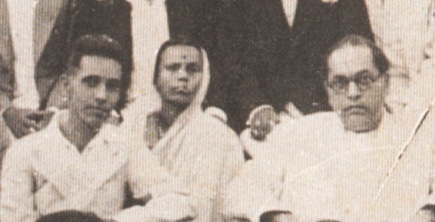
Initial Struggles Against Untouchability
From his early life, R B More had to face the stigma of untouchability. His childhood was spent in the village of Dasgaon in Mahad tehsil, where there was a separate primary school for the children of Dalits who had joined the British army. More was a brilliant student and won a scholarship on completing his primary education. But he was summarily denied admission to the Mahad high school — only because he was a Dalit! At the tender age of 11, his struggle against untouchability had begun.
With the help of some social reformers in Mahad, he wrote letters to the British government and to the district collector against this injustice, and sent copies of this letter to the press. The letter was published in one of the newspapers and the state machinery was forced to move. More thus secured admission in the Mahad high school. This was his first victory against social injustice, and the news spread like wild fire all over the district. This event created a new sense of confidence amongst the oppressed Dalit community.
From his student days, More began to take up cases of unjust and unequal treatment being meted out to Dalits in the area. Apart from writing letters to government authorities, he began organising Dalits against various forms of injustice. For instance, in those days, Dalits could not travel along with caste Hindus in public transport from their villages to Mahad, the tehsil centre. There was also a ban on Dalits selling vegetables and fish in public squares. More fought against these forms of injustice, and won. He also started a small hotel in Mahad for Dalits. This became a regular meeting place for retired Dalit soldiers and for other Dalit activists. At the time of the Mahad satyagraha, it was this hotel that became the main centre of the struggle.
Historic Satyagraha
In 1923, with the concerted efforts of a social reformer called C K Bole, the Mumbai legislative council passed a resolution opening up all public lakes, wells, dharmashalas and other public places to Dalits for the first time. When More read about this resolution, he organised a campaign among Dalits in adjoining villages and led, on December 4, 1926, hundreds of Dalits to exercise their right to drink water from the Crawford public lake in his own Dasgaon village. This created a new awakening among Dalits all over Raigad district. The organisation that led the struggle had been formed earlier the same year and it was called the Kokanastha Mahar Seva Sangh; R B More was its first general secretary, and Bhikaji Gaikwad its president.
Actually, it was in 1924 that More first organised a meeting of selected Dalit activists of Mahad tehsil. Here it was decided to organise a “Convention of the Outcasts” and to invite Dr Ambedkar to preside over it. After considerable efforts by More and his colleagues, the convention was finally fixed for March 19-20, 1927. With the success of the Crawford lake satyagraha in December 1926, Dalits in the Konkan region had gained the confidence that through organised struggle, they could win the battle for their basic human rights. After this victory, More and his colleagues launched a hectic campaign of public meetings in several villages all over the Konkan region to prepare for the Mahad convention.
The Mahad convention was a great success, with nearly 5000 Dalits from four districts (Mumbai, Thane, Kulaba and Ratnagiri) attending it. As the main organiser of the convention, R B More introduced Dr Ambedkar and his other colleagues like Anantrao Chitre, Bapu Sahasrabuddhe and Sitaram Shivtarkar. Dr Ambedkar’s speech on March 19, 1927 electrified the audience and inspired it to revolt against all forms of social oppression. On March 20, the second day of the convention, thousands of Dalits under Dr Ambedkar’s leadership marched to the Chavdar lake at Mahad, broke the centuries old ban, and drank water from the lake. The historic liberation struggle of the Dalits had begun.
This event had instant repercussions. Obscurantist caste Hindus began the campaign that the lake had been polluted, and spread rumours that the next target of the Dalits would be the Vitthal temple in Mahad, which they would now seek to enter. A large mob of caste Hindus physically attacked the satyagraha participants, a riot was unleashed and the Dalits’ houses and shops were destroyed. With the intervention of Dr Ambedkar and others, the violence was controlled and complaints were made to the government authorities. The news of the satyagraha and the violence against it spread next day to the whole country, and along with it the name of Dr Ambedkar came into national limelight. It was after this satyagraha that Dr Ambedkar pledged to devote his entire life to the cause of liberation of the untouchables.
Public Burning of the Manusmriti
On the eve of the Mahad satyagraha, with the assistance of R B More, Dr Ambedkar had taken the decision to publish a periodical called Bahishkrut Bharat (Outcast India) and had completed the formalities of its registration. Immediately after the satyagraha, the first issue of Bahishkrut Bharat came out on April 1, 1927. It contained a detailed report of the Mahad convention and satyagraha, written by R B More. In the same issue, he announced the decision to hold a second convention at Mahad to condemn the attacks by obscurantist caste Hindus on Dalit satyagrahis and to carry forward the struggle for social justice.
Again, a big campaign of public meetings was started. To physically counter any possible attacks, More formed an organisation of Dalit youth in Mumbai and named it the “Dr Ambedkar Seva Dal,” taking a cue from the Congress Seva Dal. Dr Ambedkar himself changed its name to “Samata Sainik Dal.” In forming this organisation, More took help from retired Dalit soldiers in the British army. A militant squad of Dalit youth was formed and it spread the message of the second Mahad convention far and wide.
The second Mahad convention was held on December 25-26, 1927. Thousands of Dalit men and women from all over Maharashtra attended this convention. But this time, the court had forbidden the Dalits from drinking water from the Chavdar lake. R B More, Dadasaheb Gaikwad and others insisted on breaking these court orders. But, after prolonged deliberations, it was decided not to do so. Instead, under Dr Ambedkar’s leadership, the thousands of Dalits who had gathered made a public bonfire of the Manusmruti, which was another historic and symbolic act of resistance to centuries-old caste and gender oppression. A separate meeting of Dalit women was also organised during this convention, in which Dr Ambedkar called upon them to give up outdated social practices that thwarted equality.
It was through these two historic conventions and satyagrahas at Mahad that Dr Ambedkar’s independent leadership of the struggle for social justice came to the fore. And the architect and main organiser of both these events was R B More — a fact that is sought to be deliberately effaced by some sections within the Dalit movement. The Dalit masses who had participated in both these satyagrahas spread the message of the eradication of untouchability and of all other forms of social oppression far and wide throughout Maharashtra.
Several such satyagrahas for the right to drink water from public lakes and wells were conducted in innumerable villages and towns in the state in subsequent months and years. It was the Mahad satyagraha that became the inspiration for the subsequent equally historic satyagraha for temple entry into the Kala Ram Mandir at Nashik, which began in 1932, and was led by another great stalwart of the Dalit movement, Karmaveer Dadasaheb Gaikwad. Similarly, the Parvati satyagraha at Pune led by P N Rajbhoj, Shivram Kamble and others also owed its inspiration to the Mahad struggle.
Joining the Communist Party
Soon after the Mahad satyagrahas, in 1928-29, R B More came into contact with the working class movement of textile workers in Mumbai. He was one of the founder-members of the famous Girni Kamgar Union (GKU) which, under communist leadership, organised massive strike struggles of the textile workers of Mumbai against the British government and against the mill owners. At the same time, More also became involved in the struggles of the peasantry of the Konkan region against the Khoti system, a pernicious form of zamindari that was prevalent in the area. It was through his actual participation in these class struggles of the working people that an ideological churning slowly began in More’s mind.
This process was helped by two other factors. More began the study of Marxism by reading the then banned classics like the Communist Manifesto and other Marxist literature. He also came in touch with communist leaders like B T Ranadive and S V Deshpande on the one hand, and with radical activists then working in the Servants of India Society like Anantrao Chitre and Shamrao Parulekar on the other. More became convinced that it was only Marxism that could lead to a genuine and total emancipation of mankind — economically, socially, politically and culturally. After long ideological discussions with Dr Ambedkar, who, while trying to dissuade him from such a course, nevertheless respected his honesty, integrity and convictions, R B More joined the Communist Party in 1930.
During the years 1930-32, in the course of his work among the peasantry of Konkan, More was the first general secretary of a peasant organisation called the Kulaba District Shetkari Sangh. The president of the Shetkari Sangh then was B G Kher, who would later go on to become the first Congress chief minister of Bombay State. As a result of the peasant agitations led by the Shetkari Sangh, the British regime banned it and externed More and other leaders. Earlier, due to his participation in working class struggles in Mumbai, the British had imprisoned More, and it was the shock of his imprisonment that led to the untimely demise of his mother at the age of 50.
It was in October 1930 that R B More began a weekly in Mumbai called Aavhan (Challenge), under his editorship. The masthead carried an extremely significant motto, “Weekly paper that awakens the class pride of workers and peasants by destroying the divisive sentiments of caste, varna, religion and nation.” The first issue reported about the Round Table Conference, flayed British imperialism and included articles supporting struggles of workers, peasants and Dalits. Over 2000 copies of the weekly used to be sold. After the first 12 issues, a rattled British government banned its publication in 1931.
Even after joining the Communist Party, the mutual respect and regard that R B More and Dr Babasaheb Ambedkar had for each other continued without a break. More had a high opinion of the struggle that Dr Ambedkar was waging for social justice, and felt that it complemented the work of the Communist Party. Thus, in 1930, when Dr Babasaheb Ambedkar was about to leave for the Round Table Conference, it was More who first organised a public felicitation of Dr Ambedkar in Mumbai on behalf of Mahar Samaj Seva Sangh. Later, in 1933, under the banner of the Friends Union, a cultural group of youth that was formed by More in Mumbai, the first public birthday celebration of Dr Babasaheb Ambedkar was organised. In the year 1932 to express solidarity with the Kala Ram temple entry satyagraha at Nashik, More held several meetings in the working class areas of Mumbai, collected funds and led a batch of communists to take part in the satyagraha.
In the elections of 1937 and 1946, Dr Ambedkar personally offered to put up More as a candidate from his party, but, a staunch communist that he was, More politely declined the offer. In many of the journals started by Dr Ambedkar, like Bahishkrut Bharat, Samata and Janata, More used to write regularly. In Janata he was taken on the editorial board even though he was a known communist. This showed the remarkable trust that Dr Ambedkar had in him. More welcomed Dr Ambedkar’s conversion to Buddhism, saying that it had increased the strength of the forces propounding the materialist philosophy and had, consequently, reduced the strength of the enemies of the people. More was deeply affected after Dr Ambedkar’s demise, and rushed to Bombay to be one of those who were present at the Bombay Airport to receive Dr Ambedkar’s remains.
Leader of Worker-Peasant Struggles
As a consequence of the several peasant struggles that he had led, R B More was among the handful of comrades in Maharashtra who attended the foundation conference of the All India Kisan Sabha (AIKS) at Lucknow in 1936. In 1938, when Shamrao Parulekar organised a massive demonstration of the peasantry of the Konkan region, against the ‘Khoti’ system, on the Bombay assembly under the banner of Dr Ambedkar’s Independent Labour Party (Shamrao and Godavari Parulekar joined the Communist Party a year later in 1939), it was R B More who took the initiative to involve leaders of the Communist Party in this demonstration.
In 1938, again, when the Congress ministry introduced a black bill in the Bombay assembly against the working class, R B More played an important role in bringing the Communist Party and the Independent Labour Party together to oppose it unitedly. This led to the first-ever joint working class strike against the black bill, organised by the CPI and the ILP on November 7, 1938 – significantly, on the anniversary of the Great October Socialist Revolution in Russia.
More was also active in the movement of railway workers. He was for a time the secretary of the G I P Railway Workers Union in Central Railway, the union which is now called the National Railway Mazdoor Union (NRMU). In the period from 1942 to 1946, he took the lead in organising ‘safai mazdoors’ and other Class IV employees in Mumbai, and built their union. He used to be regularly invited as the chief guest to attend conferences of these employees in places like Nagpur, Jhansi and Bijapur, where struggle calls used to be given to fight against the caste discrimination faced by them and against the scourge of untouchability.
In 1945, R B More, along with veteran trade union leader N M Joshi, attended the International Labour Organisation (ILO) conference at Paris. It was Dr Ambedkar, then labour minister in the central government, who made special efforts to see that More was sent to this meet. In this conference, More dwelt upon the miserable conditions of the working class in India in general and the plight of untouchable workers in particular. He gave specific examples of how, Dalit workers were forbidden to work in certain departments of textile mills; and of the unjust and animal-like treatment meted out to Dalit workers in some other industries.
He then raised the demand that a certain proportion of jobs be reserved for Dalits (this was five years before the concept of reservations was adopted in the constitution of India) and that the government take steps to stop all kinds of discrimination against Dalit workers. Thus More effectively raised the questions of untouchability and social oppression of Dalits for the first time in an ILO forum. His speech created a big impact and it was given wide publicity by international press. For this speech, More was publicly felicitated on his return to India — both by the Communist Party and by the Scheduled Castes Federation of Dr Babasaheb Ambedkar who also personally congratulated More.
Opponent of Caste and Class Oppression
R B More was not the only member of his family working in the Communist Party. His wife Sitabai was also an active party member. His son Satyendra and daughter Kamal were active in the then AISF and occasionally used to travel with the cultural squad led by the legendary communist trio of Shahir Amar Shaikh, Shahir Annabhau Sathe and Shahir D N Gavhankar. R B More was one of the first wholetimers of the Communist Party drawing regular party wage. Apart from jail life, More also spent nine years of his life underground. His sacrifice and selflessness were taken note of by the first party congress of the CPI held at Mumbai in 1943, which felicitated the More family as a “communist family.”
In the forums of the Communist Party, More always raised the question of caste oppression. Before the third party congress in 1953, he had sent a special note to the party leadership on the question of untouchability and the caste system. The then Polit Bureau had taken this note seriously and had circulated it to all the party state committees, asking them to provide relevant information and comments. He sent a revised version of this note in 1957 and 1964, stressing the need to take up issues of caste and social oppression as an integral part of the class struggle and making a balanced assessment of Dr Babasaheb Ambedkar’s positive contributions to the struggle for social justice. On this issue, he also had discussion and corresponded with top Communist leaders like E M S Namboodiripad, B T Ranadive, M Basavapunnaiah and Ajoy Ghosh.
His interest in theory was matched to the last by his rigour in practice. In the massive statewide satyagrahas of the landless that were led by renowned RPI leader Karmaveer Dadasaheb Gaikwad in 1959 and 1964, leaders of the Communist Party like Shamrao Parulekar, Godavari Parulekar, Krantisimha Nana Patil, R B More and thousands of peasants and agricultural workers took active part and courted arrest. For the first time in several years, the red flags of the Communist Party and the blue flags of the Republican Party came together in struggle. The overwhelming majority of landless peasants and agricultural labourers who filled the jails of Maharashtra at the time were Dalits and Adivasis. Yet another instance, amongst many, that proved that the oppressed castes in India are, to a great extent, synonymous with the exploited classes.
It was due to his honest, sacrificing and selfless nature that R B More was loved and respected by party comrades and the people alike. His live contact with the oppressed and his ideological conviction drew several Dalit activists from all over Maharashtra to the Communist Party. Among them were leading Dalit figures like K M Salvi, one of the main organisers of the Nashik temple entry satyagraha; S B Jadhav, secretary of the Mumbai unit of the Scheduled Castes Federation; Captain Sasalekar of the Samata Sainik Dal; and many others. All of them remained with the Communist Party till the end. This was in sharp contrast to many other followers of Dr Ambedkar, who deserted the RPI and joined the Congress soon after his demise. R B More and K M Salvi also attracted several creative cultural and literary figures to the party, Marxism and Left movement. The most prominent amongst them was Shahir Annabhau Sathe, founder of Dalit Sahitya Baburao Bagul, progressive famous poet Shankar Shailendra, Shayar Majnoo Indori, Shahir Rasool Kadam etc.
With the split in the CPI in 1964, R B More was among those who joined the CPI(M) without the slightest hesitation, and he was elected to its state committee. In 1965, with most of the state leadership of the newly-formed CPI(M) having been detained by the Congress central government, R B More started the weekly Jeevanmarg on April 14, 1965, on Dr Ambedkar’s birth anniversary. The journal became, and continues to remain, the weekly organ of the CPI(M) Maharashtra state committee.
Glowing Tributes
The three most glowing tributes to R B More were those paid by renowned Marxist thinker and writer Rahul Sanskrityayan, progressive writer Ramesh Chandra Sinha and by Dr Ambedkar himself. Rahul Sanskrityayan, in his book Naye Bharat ke Naye Neta (New Leaders of New India) that was written in 1945, penned inspiring profiles of leading communists like Muzaffar Ahmed, P Sundarayya, E M S Namboodiripad, P C Joshi, Ajoy Ghosh, Kalpana Dutt and others. The book also included a beautifully written profile of R B More. Ramesh Chandra Sinha wrote in his essay that he was a dedicated captain of the Indian proletariat. In that Hindi essay he wrote about Comrade Kalyansundaram and Comrade Fazal Ilahi Qurban also. This was published in 1945.
The tribute paid to R B More by Dr Ambedkar has been recorded in a book called Atmashodh by Datta Kelkar. The passage in the book relates how, many years after joining the Communist Party, More was standing on the footpath as part of a crowd at a public meeting in Mumbai that was being addressed by Dr Babasaheb Ambedkar. Dr Babasaheb Ambedkar was then a member of the Viceroy’s Executive Council, the same status as of today’s union minister. When Dr Babasaheb Ambedkar saw More, he immediately asked him to come to the stage. When More declined, Dr Babasaheb Ambedkar ordered his activists to physically bring More on to the stage, leaving him with no choice. When More reached the stage, Dr Babasaheb Ambedkar introduced him to the meeting thus, “This is R B More. A very great man. Among the few people whose efforts led me to enter political life, one is R B More!”
After a remarkable life of struggle, R B More passed away in Mumbai on May 11, 1972. B T Ranadive, in his funeral oration, paid moving tributes to his life and work. A massive condolence meeting was presided over by Dr Ambedkar’s son and RPI leader, Bhayyasaheb Ambedkar.
A book in Marathi on the life and times of R B More, titled Comrade R B More: A Powerful Link Between the Dalit and the Communist Movement, written by Satyendra More, with an introduction by CPI(M) state secretary and Central Committee member Prabhakar Sanzgiri, is being published soon, to coincide with his birth centenary year.
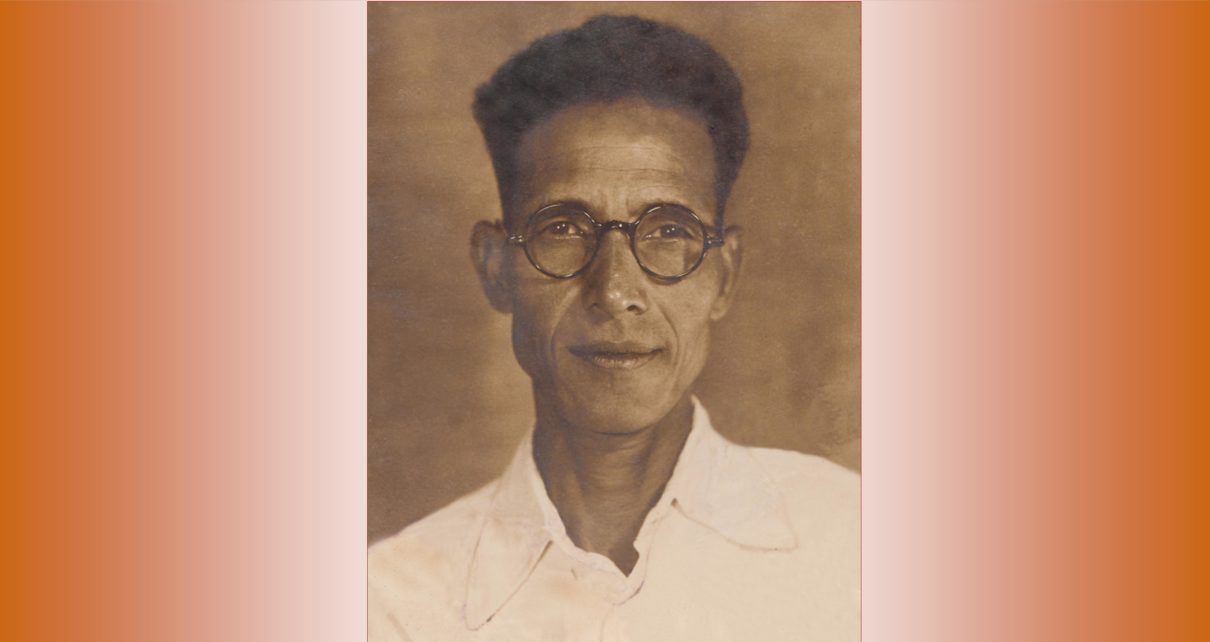
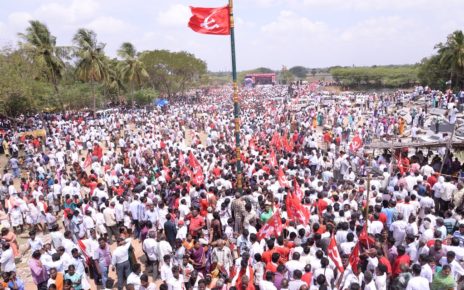
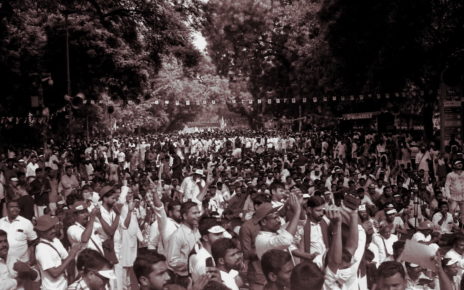
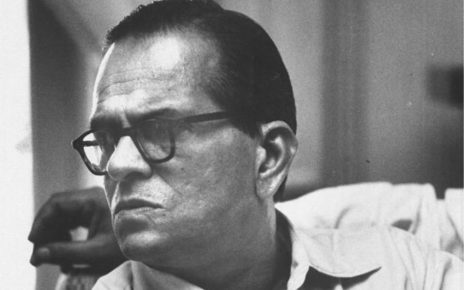
This is my first time pay a visit at here and i am truly impressed to read everthing at single place.